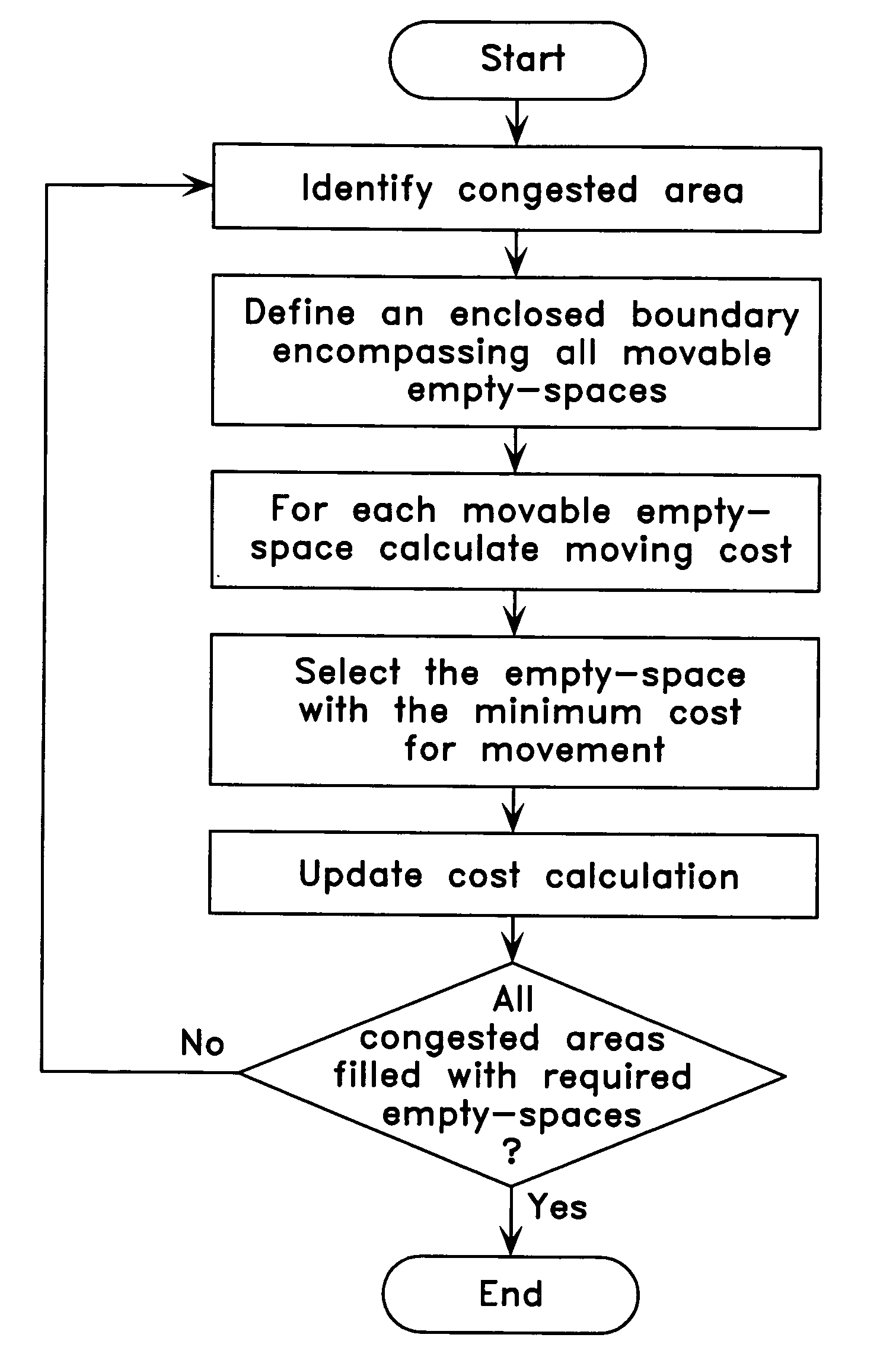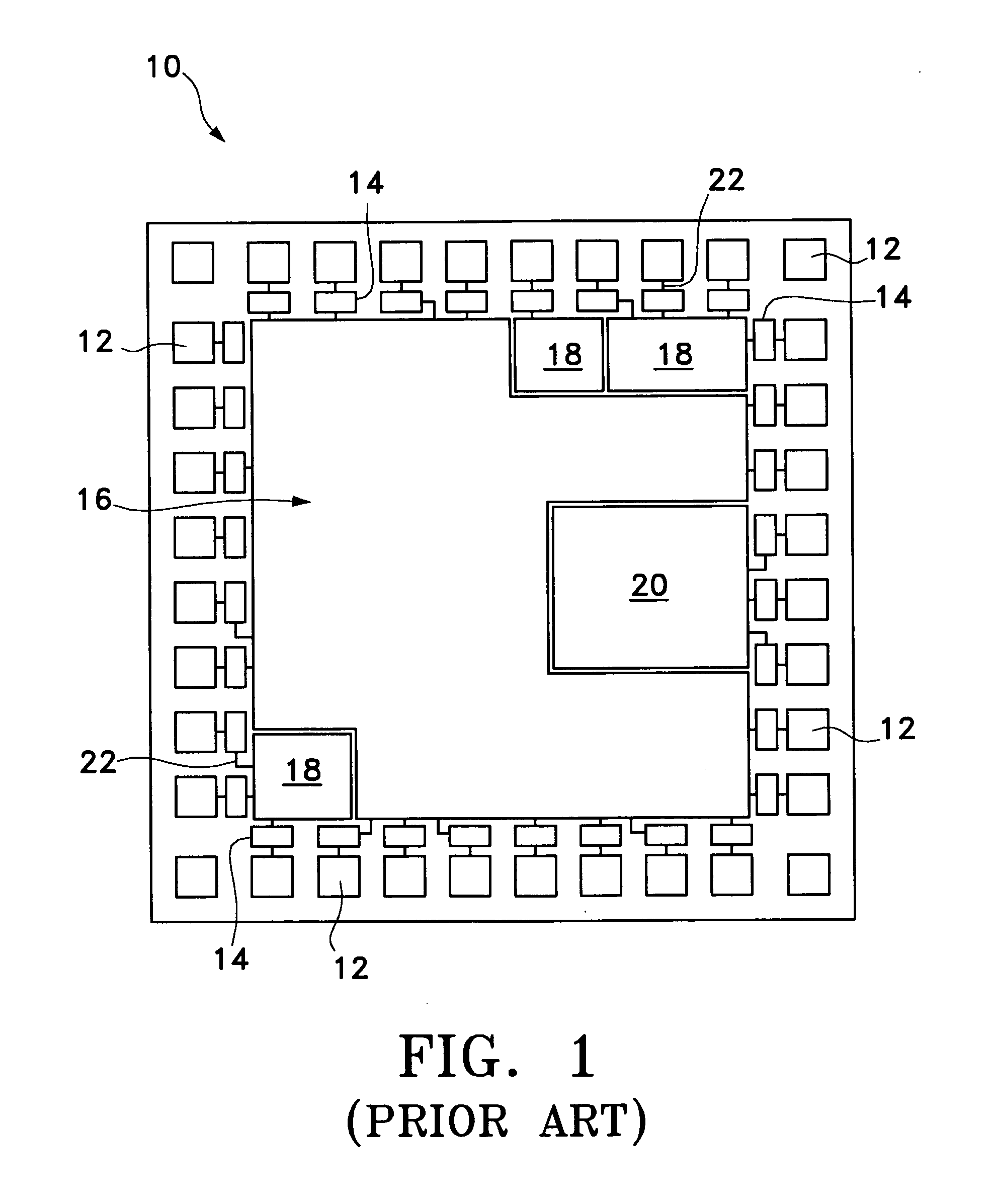Chip-area reduction and congestion alleviation by timing-and-routability-driven empty-space propagation
a technology of empty space and chip area, applied in the direction of multi-objective optimization, cad techniques, instruments, etc., can solve the problems of unnecessary enlargement of the die size of the ic, inability to design the ic manually, and undesirable consequences
- Summary
- Abstract
- Description
- Claims
- Application Information
AI Technical Summary
Benefits of technology
Problems solved by technology
Method used
Image
Examples
Embodiment Construction
[0035]The following description is presented to enable any person skilled in the art to make and use the invention. Details are set forth in the following descriptions for purpose of explanation. It should be appreciated that one of ordinary skill in the art would realize that the invention may be practiced without the use of these specific details. In other instances, well-known structures and processes are shown in block diagram forms in order not to obscure the description of the invention with unnecessary details. Thus, the present invention is not intended to be limited to be the embodiments shown, but is to be accorded with the widest scope consistent with the principles and features disclosed herein.
[0036]In the following description, the process of empty-space propagation of an IC layout is first described. Thereafter, application examples utilizing the inventive method for chip-size reduction and congestion alleviation are depicted.
Empty-Space Propagation
[0037]Empty-space p...
PUM
 Login to View More
Login to View More Abstract
Description
Claims
Application Information
 Login to View More
Login to View More - R&D
- Intellectual Property
- Life Sciences
- Materials
- Tech Scout
- Unparalleled Data Quality
- Higher Quality Content
- 60% Fewer Hallucinations
Browse by: Latest US Patents, China's latest patents, Technical Efficacy Thesaurus, Application Domain, Technology Topic, Popular Technical Reports.
© 2025 PatSnap. All rights reserved.Legal|Privacy policy|Modern Slavery Act Transparency Statement|Sitemap|About US| Contact US: help@patsnap.com



